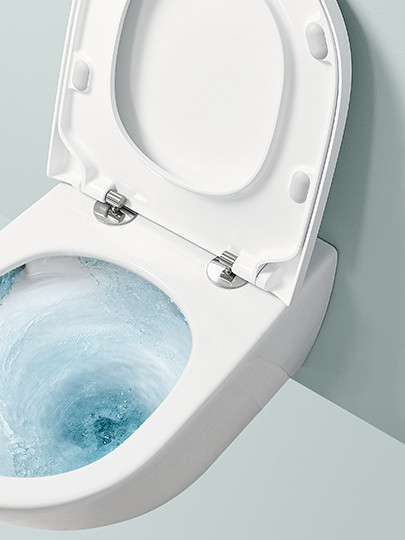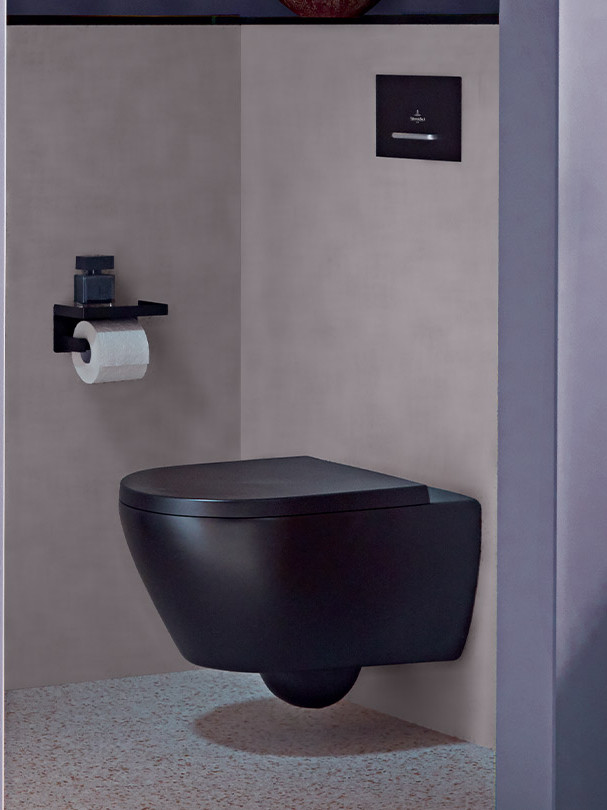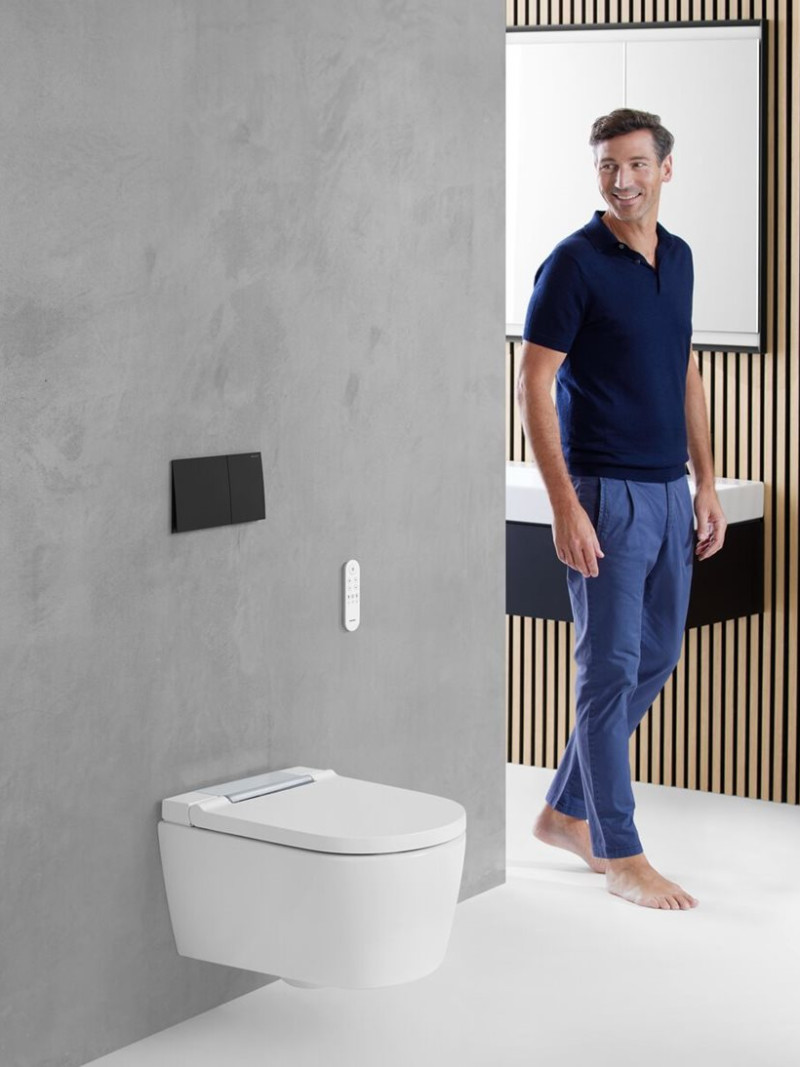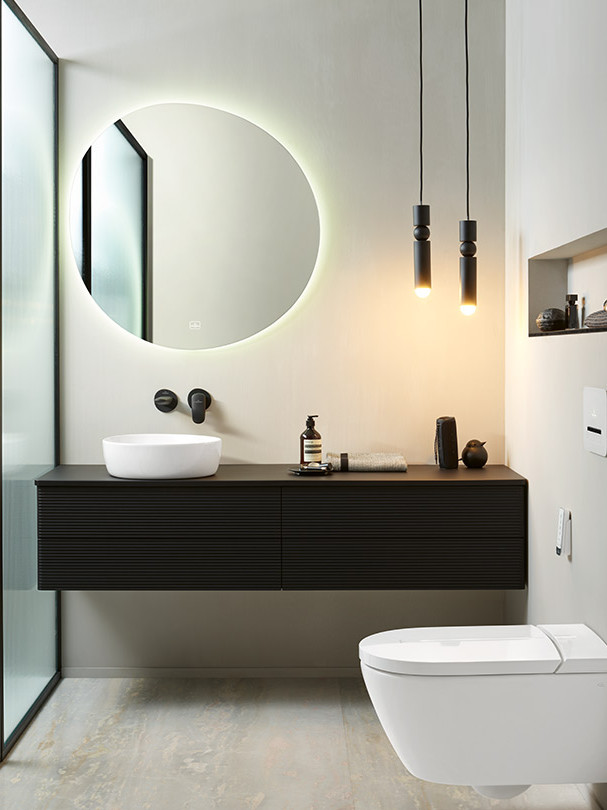How to maintain your toilets

Bathroom
How to
Learn the best practices for toilet maintenance from daily cleaning to technical checks, ensuring longevity and hygiene in your bathroom.
How to maintain your toilets
It is essential to maintain your toilets regularly, to ensure good hygiene in the home, prevent plumbing problems and to extend the lifetime of this key sanitary equipment. There is more to effective maintenance than the visual aspects alone. Good maintenance has a direct impact on the health and well-being of the home’s users, by stopping the spread of germs and keeping the environment clean and healthy.

Different types of toilets, each with their own type of maintenance
Traditional flush toilets
These toilets feature a flushing mechanism that releases pressurised water to flush away waste. To avoid limescale build-up and plumbing problems, they need regular maintenance of the bowl, tanks and the flush mechanism.Eco-friendly dry toilets
These toilets work without water, collecting solid and liquid waste separately. Their maintenance requires regular emptying and cleaning of the containers, as well as adding material such as sawdust or peat to absorb the liquids and limit any smells.Toilets featuring modern technologies
These models can include automatic features such as bidet water jets, heated seats and drying functions. It can be more difficult to maintain these toilets, possibly requiring regular technical checks to ensure that the electronic components operate correctly.
Regular cleaning: daily and weekly
Daily routine
To keep everything clean, hygienic and to disinfect, clean on a daily basis the exposed surfaces of the toilets with disinfectant wipes or a light cleaning solution. This should include the seat, lid and bowl rim.Weekly routine
Once a week, use a stronger cleaning solution or a descaler to scrub the inside of the bowl, focusing under the rims and around the siphon. This deep cleansing helps prevent the build-up of scale and bacteria.
Recommended products
For traditional flush toilets
Use cleaning agents that contain chlorine and have antibacterial properties, such as bleach-based liquids or disinfectant in tablet form.For eco-friendly dry toilets
Choose biodegradable and non-toxic products, such as enzyme-based solutions or diluted vinegar, in order not to disturb the composting process and to maintain the ecological balance.For toilets featuring modern technologies
Go for mild cleaning agents, which are specially formulated for electronic equipment, in order not to damage the sensitive components. Microfibre cloths, slightly damp, are often sufficient to clean toilets like this.
Descaling toilets
Identify limescale traces
When this type of deposit builds up, it can significantly affect the performance of your toilets. It can notably block jets of water by reducing the flush flow, which results in less powerful flushing and uneven water distribution in the bowl. If these problems are ignored, permanent damage can occur to the bowl surface, e.g. erosion or scratches caused by abrasive cleaning to remove hardened deposits. Internal metal components can also become corroded, increasing the risk of costly failures.

Visual appearance
Scale deposits often look like hard, white or grey limescale lumps, visible below the water level in the bowl or around the jets. These deposits can also form inside the siphon.Texture
It feels rough and granular when touched. An uneven or chalky surface inside the bowl is a clear indicator of this substance’s presence.Smells
Scale deposits can attract bacteria and waste, leading to persistent smells even after regular maintenance. If unpleasant smells linger on after the cleaning, this could be a sign that scale deposits are still there or are building up.
Descaling toilets
Descaling techniques
To clean and effectively descale any kind of toilet, you should choose methods and products that work well and are safe for the specific material used in your fittings. Here are a few general recommendations:

Use of white vinegar and baking soda
For normal applications, the combined use of white vinegar and baking soda is highly effective. Warm the white vinegar slightly to enhance its effectiveness, then pour it into the toilet bowl and leave it to work for several hours or overnight. To boost this action, you can also add baking soda to the bowl before pouring in the vinegar. The bubbles that form help to dislodge stubbornly attached limescale. After the pause period, scrub the inside of the bowl firmly and flush for a complete clean.Use citric acid to tackle stubborn limescale and use mild descaling
When the deposits are particularly tough, citric acid can offer a milder yet still effective alternative. Sprinkle citric acid in powder form directly into the bowl, leave to work for a few hours, then scrub and rinse with lots of water. This method is less aggressive than strong chemical products and is more suitable for regular use.Using chemical products for the worst cases
In cases of very stubborn scaling, you may need to descale using specific chemical products, e.g. those containing hydrochloric or sulphuric acid. But these products are highly corrosive and must be used with the greatest caution. You should wear protective gloves and goggles, and ventilate the area well when using them. If you’re unsure about the procedure, or prefer to avoid any risk, then calling in a professional to descale your toilet is a recommended solution. A qualified plumber can handle this task safely and efficiently, ensuring that your toilets are well maintained without compromising your safety or that of your fittings.
Preventing scale
Using water softeners
If you live in a region where the water is hard, then installing a water softener can really help, by eliminating the excess minerals before they reach your toilets. This helps to keep the toilet bowls clean and to extend the life of your sanitary fittings.Water-softening products
Include the regular use of water-softening products in your cleaning routine. These products help to prevent the build-up of various deposits, by changing the water’s chemical balance or by creating a protective barrier in the toilet bowl.Maintenance of the components of toilets
Cleaning and descaling regularly is not the only thing you can include in your household routine to guarantee that your toilets work well. It’s also important to take into account all the components of your WC or WCs.Regular maintenance of the flush mechanism
Check the flush mechanism from time to time, to identify any signs of wear or defects, e.g. leaks or erratic operation. By replacing worn parts such as gaskets and valves, you can prevent more serious problems and reduce unnecessary water consumption.Cleaning joints and connectors
Rubber or silicone seals around the base and tank of your toilet can deteriorate over time. Clean them regularly with a mild product to remove residues and mildew, and check their structural integrity. Replace gaskets that show signs of cracking or hardening, to maintain optimum watertightness.
Handling blockages
Prevention of blockages
Don’t throw non-biodegradable materials into toilets, e.g. wet wipes, cotton buds or feminine hygiene products. These items can cause major blockages that are difficult to remove and may require costly remedial action.Using unblocking tools
Tip: keep a plunger nearby to deal quickly with small blockages. For deeper blockages, a plumbing snake can be used to remove obstructions without damaging the pipes. If blockages remain, it may be necessary to call in a professional for a full drain cleaning.
In brief
Regularly maintaining your toilets is a crucial task, one that goes further than simple cleanliness and involves essential aspects such as health, hygiene and the overall smooth operation of your plumbing system. Whether traditional, eco-friendly or equipped with advanced technology, each type of toilet requires special attention to ensure efficiency and longevity. Daily and weekly cleaning routines, combined with anti-scaling measures and regular checking of components, can significantly reduce the risk of future problems. By adopting the right practices and using the right products, you contribute not only to a healthier home environment, but also to lower long-term maintenance costs.
